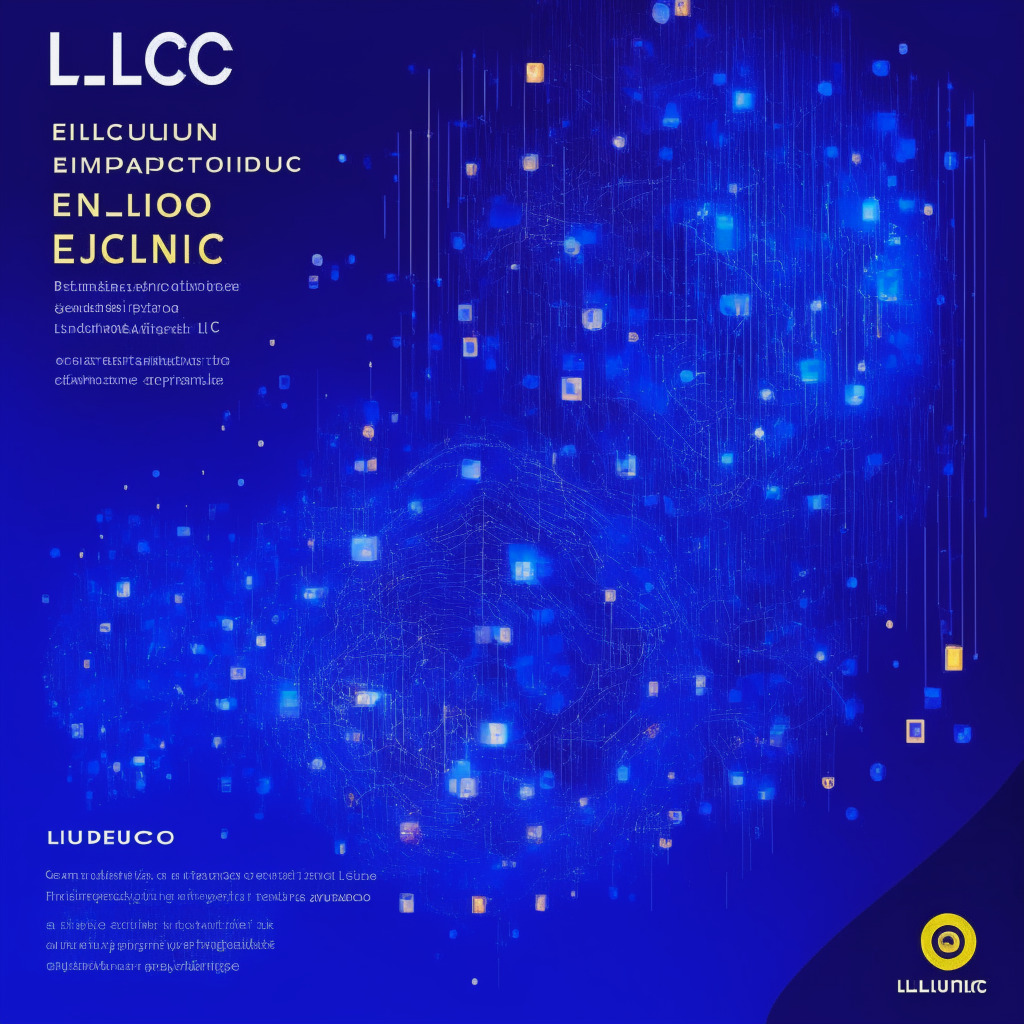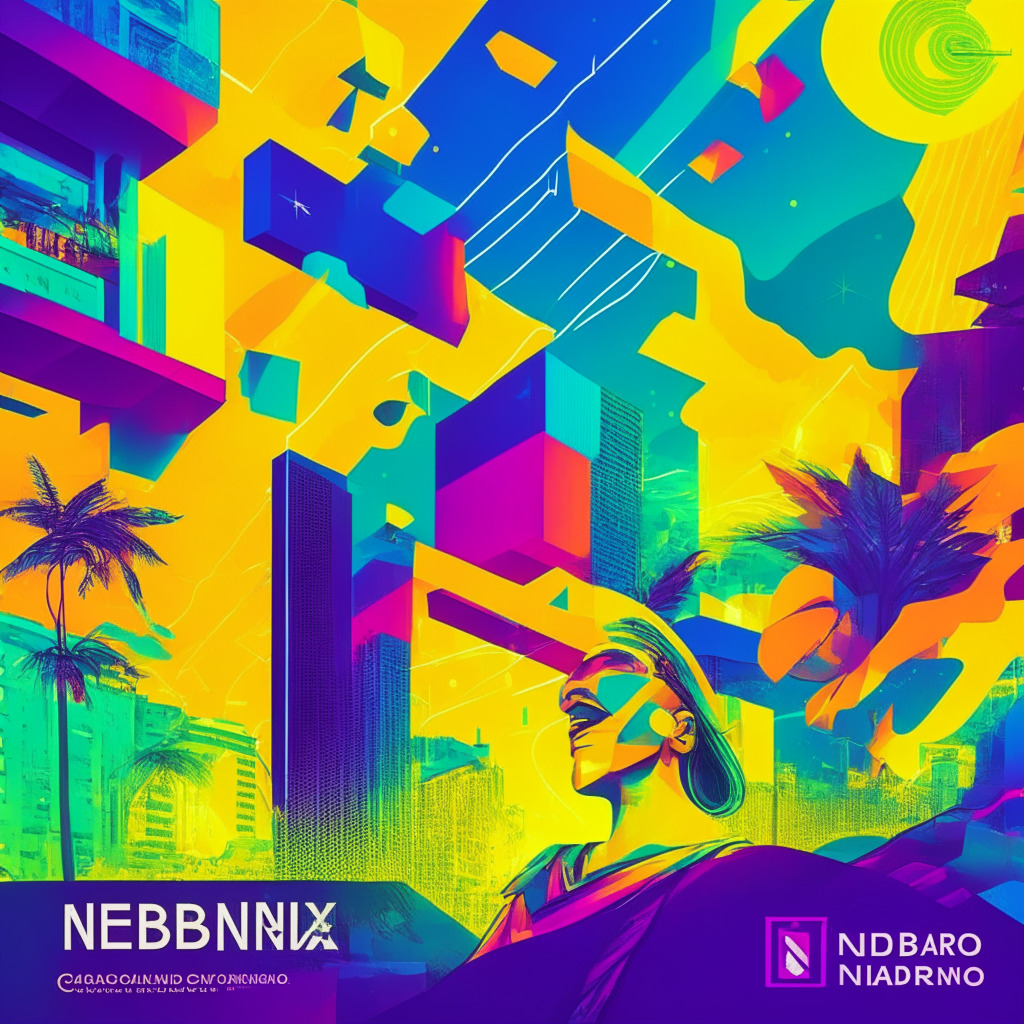The French Central Bank highlights the potential of a wholesale central bank digital currency (wCBDC) to improve the safety, settlement certainty, and efficiency of cross-border transactions. It reports successful tests of wCBDC paradigms based on distributed ledger technology (DLT) and foresees benefits for native digital and tokenized assets. The bank also emphasizes the need for energy-efficient solutions amidst global sustainability concerns.
Search Results for: Distributed Global
Unraveling South Korea’s Tireless Stride Towards Cryptocurrency Transparency and Control
South Korea’s Financial Services Commission plans to implement new asset disclosure rules for firms issuing or holding cryptocurrencies to enhance transparency in crypto transactions. The move, following related proposals, includes revising accounting standards and enforcing virtual asset transaction disclosure with an immediate effect.
Navigating the Tense Waters: Renminbi-Based Stablecoin Vs. China’s Digital Yuan
Jeremy Allaire, CEO of Circle, proposed that a renminbi (RMB)-based stablecoin might be better for the Chinese government than a central bank digital currency (CBDC) to increase global RMB use. However, China’s digital yuan, which isn’t positioned as a stablecoin, could create conflicts for Circle’s USD Coin.
Navigating the Roaring Tides: The Confluence of Stablecoins, CBDCs and China’s Economic Strategy
Jeremy Allaire, CEO of Circle, suggests that a Yuan-backed stablecoin could aid Beijing’s goal of widespread acceptance of the Chinese Yuan. However, he notes that strict economic policies and capital controls could be potential obstacles. Allaire highlights that despite the challenges, stablecoins have proven beneficial for overseas monetary remittances, particularly for Chinese firms.
Exploring the Digital Pound: Ledger Technologies, Privacy, and Public-Private Collaboration
The Bank of England is progressing with its Central Bank Digital Currency initiative, exploring multiple ledger technologies including blockchain for the digital pound. The privacy-focused design prioritizes user privacy and involves collaboration between public and private sectors, highlighting the importance of evolving financial landscape and global shift towards digital currencies.
Bybit’s Entry Boosts Cyprus Crypto Scene: Comparing It to Malta’s Blockchain Island Status
Bybit, the world’s third most visited crypto exchange, has received license approval to operate as an exchange and custody service in Cyprus. This will contribute to the growing crypto ecosystem in Cyprus, offering trading between crypto and fiat currency pairs, and crypto-related financial services.
Crypto Exchange FTX Sues for $700M: Scandal Impact on Blockchain Future, Tech & Markets
FTX has filed a lawsuit to recover $700 million in funds transferred to investment firm K5 Global and its co-owners, alleging inadequate value and potentially avoidable transfers. The recovery and potential sale of Anthropic’s stake could impact the blockchain’s future, addressing concerns about safety and transparency, while driving innovation in technology.
Unlocking the Power of Layer-1 Marketing in the Blockchain World: Building Trust and Loyalty
A solid marketing strategy for blockchain projects begins with establishing a strong brand identity, or layer-1, encompassing values, ideas, narratives, and visuals. Integrating essential characteristics like decentralization, immutability, transparency, and longevity can lead to long-term success and valuable connections with the target audience.
Crypto Market Growth and Challenges: Sustainability, Influence, and Security Concerns
In this article, we explore the blockchain future, discussing technology, market trends, and safety while incorporating informed skepticism. We cover the cryptocurrency market’s growth, the influence of figures like Elon Musk, and blockchain technology’s potential benefits and pitfalls, as well as security concerns in decentralized finance.
EUIPO Trials Blockchain Solution to Combat Counterfeiting: Hype or Hope?
The European Union Intellectual Property Office (EUIPO) recently discovered promising potential in blockchain-based anti-counterfeiting tools after trials involving brands, logistics, and border control. Utilizing distributed ledger technology, an open-source platform is being developed to track products and verify their authenticity, potentially reducing counterfeit market and protecting consumers and businesses.
Jack Dorsey’s $5M Brink Investment: Pioneering Crypto or Risking Stock Stability?
Jack Dorsey has pledged $5M to support the development of the Bitcoin protocol through Brink, showcasing his unwavering commitment to the digital currency’s future potential. However, the cryptocurrency market’s volatility and uncertainty can impact the stocks of companies associated with it, raising concerns among shareholders and investors.
Crypto’s Dark Side vs. Saving Humanity: The Blockchain Dilemma Explained
Despite witnessing crypto’s darker side, former “crypto cop” asserts that distributed ledger technology is the most important innovation of our time, offering potential for decentralized, peer-to-peer monetary systems. Recognizing its unparalleled potential, it’s crucial to ensure the continued growth and innovation of blockchain technology while combating nefarious uses.
University of Toronto Joins Ripple’s Blockchain Initiative: Pros, Cons, and Impact on Crypto Industry
The University of Toronto collaborates with Ripple to launch an XRP ledger validator as part of Ripple’s University Blockchain Research Initiative (UBRI) in Canada. This partnership aims to support blockchain and crypto technology research and provide students with opportunities to develop skills for crypto-native careers.
OECD’s Crypto-Asset Reporting Framework: Unveiling a New Era in Taxation and Its Implications
The Organization for Economic Cooperation and Development (OECD) introduces the Crypto-Asset Reporting Framework (CARF), aimed at reducing tax evasion through cryptocurrencies. CARF consists of rules for gathering relevant tax information, a new multilateral authority, and an electronic format for information exchange among authorities. The success of CARF will depend on governments’ willingness to adopt and enforce these guidelines.
Blockchain Innovation & Regulation: Striking the Balance for US Leadership in Web3
The House Energy and Commerce Committee Subcommittee discussed blockchain technology and the future of Web3, addressing non-financial use cases such as contract tracing for Covid-19, data security, and supply chain management. However, lack of regulatory clarity and the focus on financial applications pose challenges to fostering innovation and retaining top talent in the US.
Crypto Market Rocked: Binance & Coinbase Face SEC Lawsuits, $600M Negative Net Outflows
The SEC’s lawsuits against Binance and Coinbase, accusing them of unregistered offers and sales of securities and operating as an unregistered broker, have resulted in $600 million in negative net outflows for both exchanges. This development raises questions about the future of crypto exchanges, regulation, and the global crypto market’s direction.
Bankrupt FTX’s Anthropic Stake Sale: Navigating the Future of AI and Crypto Exchange Loss Recovery
The now-defunct cryptocurrency exchange FTX is looking to offload its stake in AI startup Anthropic, following bankruptcy. Anthropic, valued at $4.6 billion, is developing a general-purpose AI chatbot called Claude. The potential sale’s outcome may impact former FTX customers and stakeholders.
Ecoterra’s Green Crypto Revolution: Is $ECOTERRA the Future for Recycling Rewards?
Web3 Recycle-to-Earn platform Ecoterra’s native token, $ECOTERRA, hits $4.8 million in presale, incentivizing recycling and reducing carbon footprints. Through partnerships with major brands and application features like Reverse Vending Machines, Ecoterra fosters trade in recycled materials, carbon offsetting, and transparent environmental impact tracking.
HSBC Recognizes Ripple’s XRP Ledger: Game Changer or Regulatory Minefield?
HSBC, one of the world’s largest banks, highlights Ripple’s XRP Ledger as a game changer in the financial sector for real-time cross-border settlements. Despite ongoing legal challenges with the U.S. Securities and Exchange Commission, Ripple’s global expansion and strong YTD increase suggest potential success but warrant caution in navigating regulatory issues and broader concerns.
Navigating Decentralization for a Safe, Regulated Future: Maelstrom’s Strategy and Vision
In a recent interview, Akshat Vaidya, investment head of Maelstrom, discussed the fund’s focus on decentralization to avoid regulatory conflicts. Maelstrom invests in companies like Obol Labs, which offer mission-critical solutions addressing potentially huge markets, while keeping regulatory concerns at bay.
Privacy Coins and Self-Hosted Wallets: Money Laundering Threat or Essential Privacy Tool?
The European Banking Authority (EBA) warns crypto companies to be vigilant against money laundering activities involving privacy coins or self-hosted wallets. EBA seeks amendments to its risk guidelines for Crypto Asset Service Providers (CASPs) to establish common regulatory expectations and improve customer assessment.
Digital Euro: Balancing Innovation, Privacy, and Skepticism in the CBDC Race
The European Central Bank (ECB) finalizes digital euro prototypes, potentially boosting innovation while remaining skeptical about adopting Web3-style distributed ledger technology and smart contracts. With the European Commission set to publish a bill covering privacy safeguards in June, the digital euro could significantly impact the global financial scene.
Crypto Exchange OKX Expands to France: Adoption, Jobs, and Future of Digital Assets
Cryptocurrency exchange OKX plans to establish operations in France and hire 100 full-time employees over three years. The exchange has applied for Digital Asset Service Provider (DASP) registration, joining over 70 approved DASPs in the country, including Bitstamp and Societe Generale Forge.
Worldcoin: A Questionable Vision of Crypto UBI and Biometric Data Dilemmas
Worldcoin, a project raising $115 million, intends to distribute its tokens as “universal basic income” using retina scanning via The Orb device. However, it faces skepticism due to privacy risks, ethical concerns, deceptive marketing practices, and potential GDPR violations.
The Film3 Movement: Blockchain Revolutionizing Cinema and Challenging Tradition
The Film3 Movement aims to reshape the cinema industry using blockchain technology, providing a decentralized platform for content creators to gain greater control and profit share. This approach promises a paradigm shift in film production, distribution, and consumption, benefitting filmmakers and audiences. However, concerns remain regarding the scalability and complexity of blockchain-powered platforms.
Brazil’s CBDC Pilot Project: Nubank and Crypto Firms Invited, Changing the Financial Landscape
The Brazilian Central Bank has selected crypto-friendly neobank Nubank among other firms for its central bank digital currency (CBDC) pilot project. The move signals a shift in attitude and possible recognition of incorporating crypto-related businesses in the development of a CBDC.
Family Offices’ Crypto Interest vs Regulatory Hurdles: Exploring Contradictory Surveys
A recent Ocorian survey shows 90% of family office professionals experiencing client-driven demand for including crypto in investment strategies. However, 80% face challenges due to lack of sufficient regulatory and reporting support, highlighting the need for expertise in the high-risk crypto asset class.
FTX Reboot Plan: Reviving a Fallen Exchange and Addressing Security Concerns
FTX CEO John J. Ray III is working on a reboot plan for the collapsed crypto exchange, with potential investors and enhanced security measures in mind. Despite many efforts, a concrete path forward remains uncertain, as the crypto community anticipates further developments in the revival plan for FTX 2.0.
Bowling Achievements Turned NFTs: Pros, Cons & the Future of Digital Awards
The Professional Bowlers Association (PBA) and Bowlero have launched League Bowler Certification Awards, tokenized achievements in the form of non-fungible tokens (NFTs), on the Avalanche blockchain. These soulbound tokens will be airdropped to around 300,000 Bowlero league participants to recognize their bowling accomplishments, paving the way for blockchain integration in the sports industry.
Exploring CBDCs for Wholesale Cross-Border Payments: Project Cedar x Ubin+ Insights
The Federal Reserve Bank of New York’s NYIC and the Monetary Authority of Singapore’s Project Cedar x Ubin+ explored utilizing central bank digital currency (CBDC) for wholesale cross-border payments, focusing on interoperability and efficiency. Their findings showcase potential gains but also highlight concerns and challenges, including privacy, security, and financial system impact.
Exploring AI and Blockchain Synergy for a Decentralized Digital Future
A recent tweet claiming that 90% of web3 companies have pivoted to AI raises the issue of misunderstanding the interconnected relationship between technologies like blockchain and AI. Blockchain offers valuable solutions to AI’s challenges, and integrating diverse technologies and intelligent legislation will be key to shaping our digital future.
Exploring CBDCs for Seamless Cross-Border Transactions: Potential and Challenges
The New York Federal Reserve and Monetary Authority of Singapore’s joint research suggests that Central Bank Digital Currencies (CBDC) operating on different networks could enable cross-border and cross-currency payments with near real-time settlement finality. This development highlights the potential for a transformative shift in global finance.































